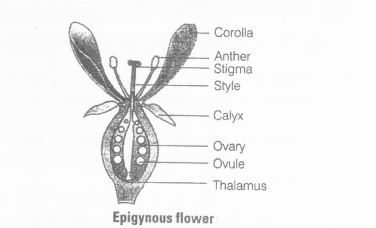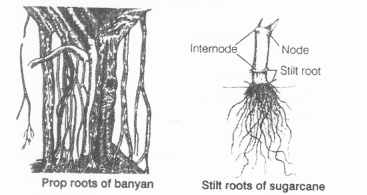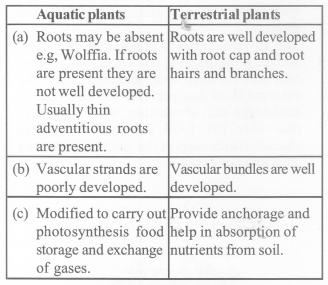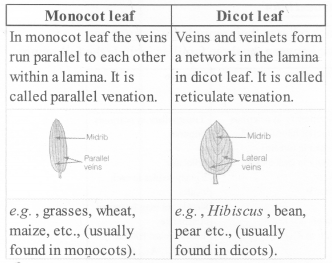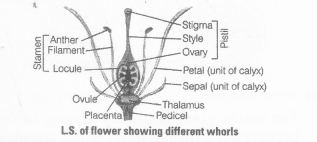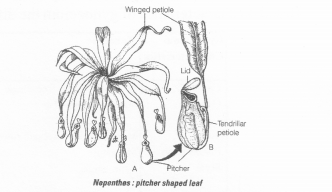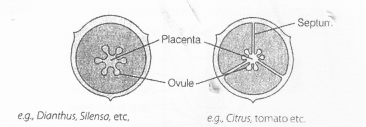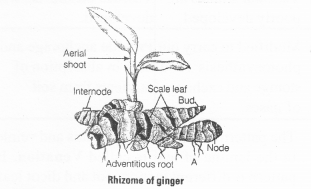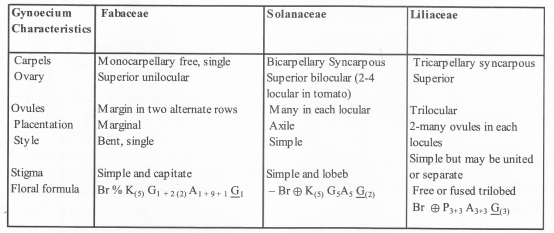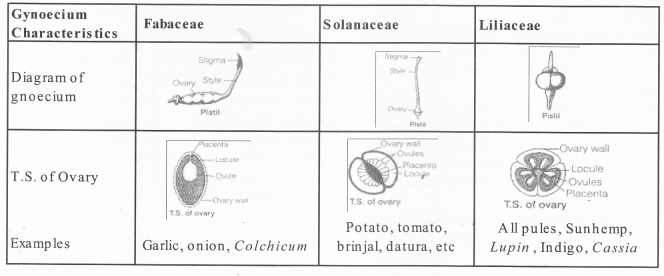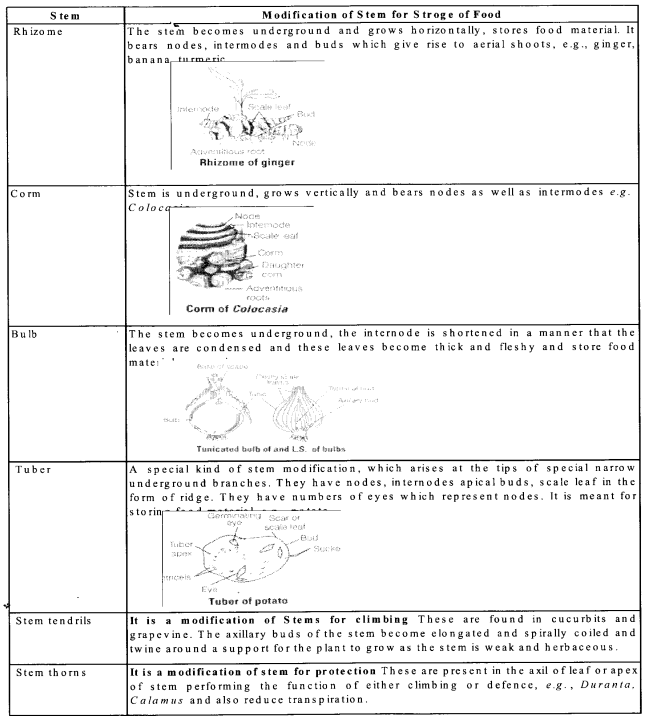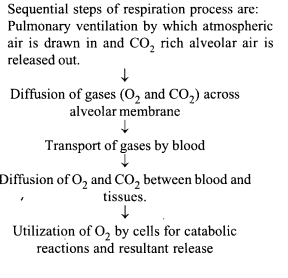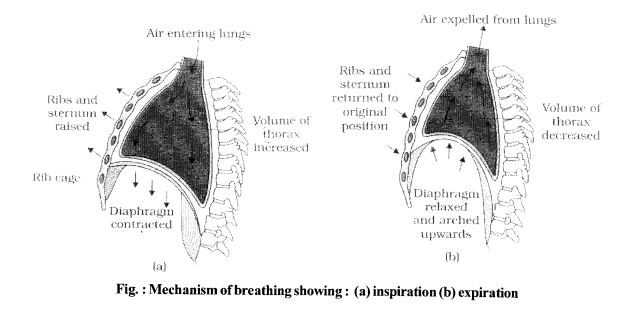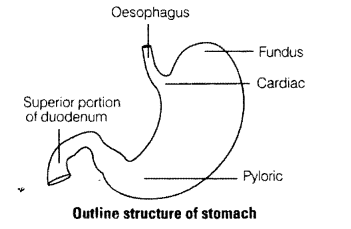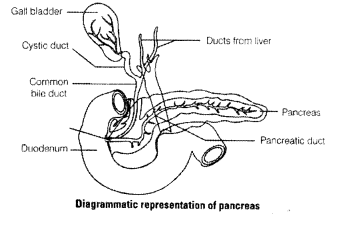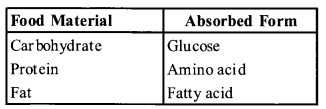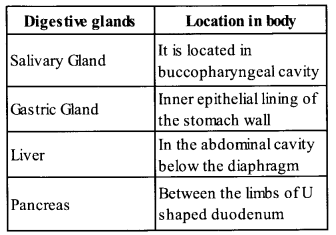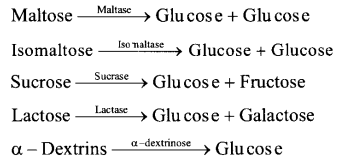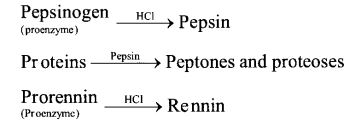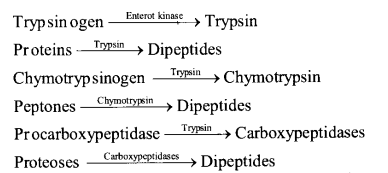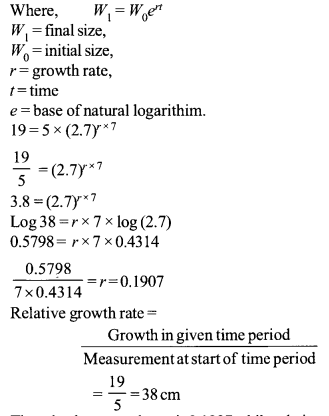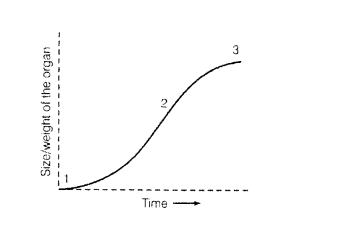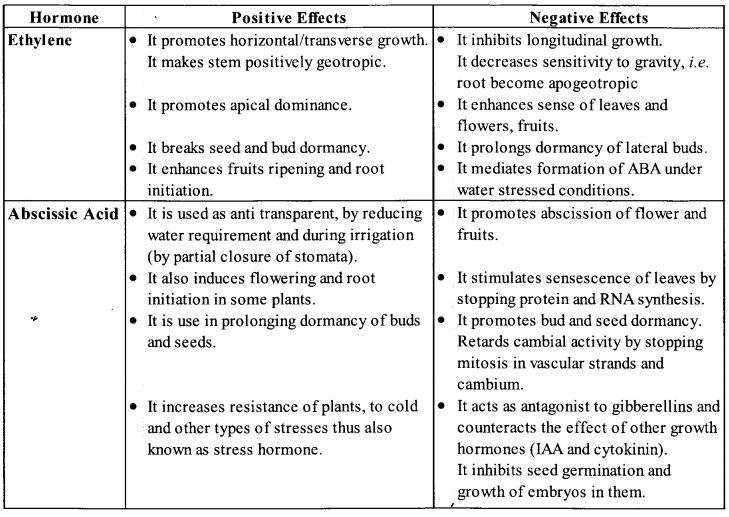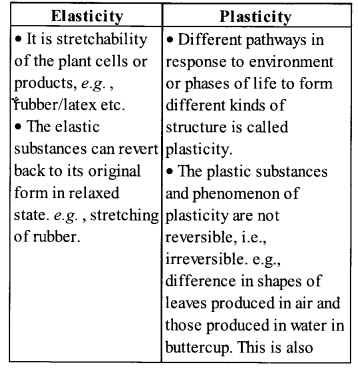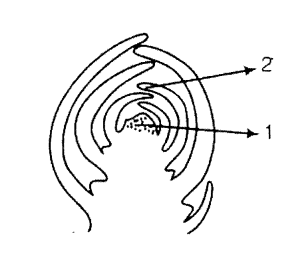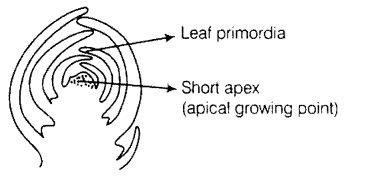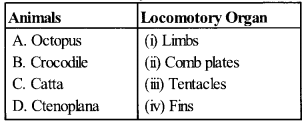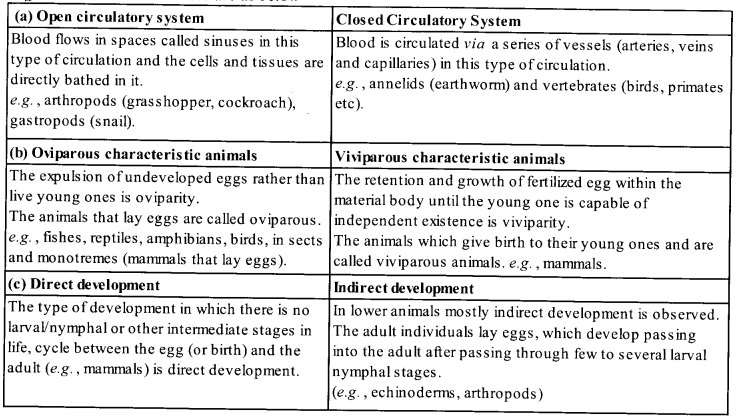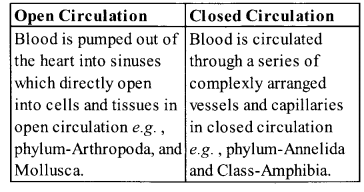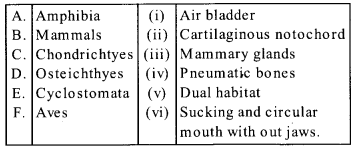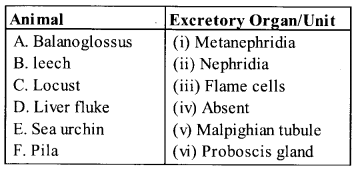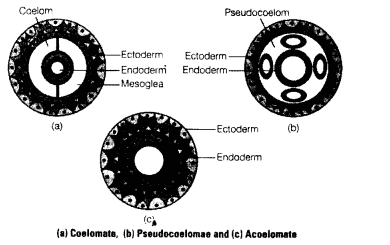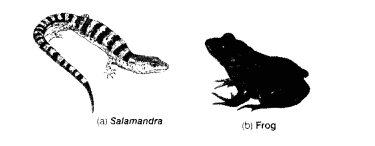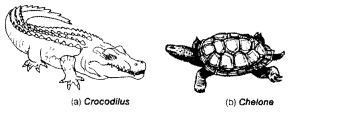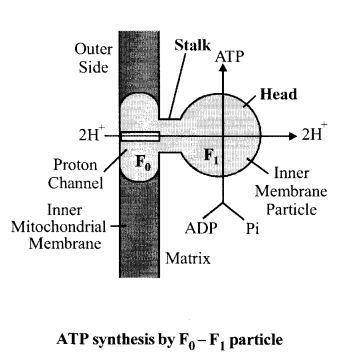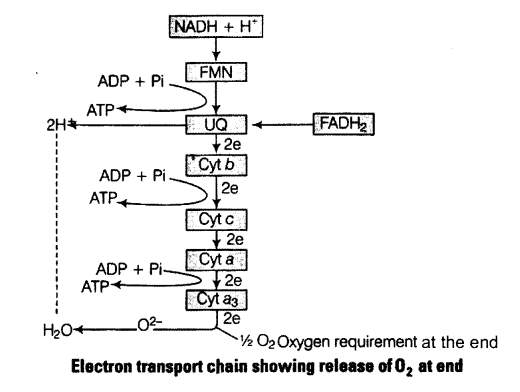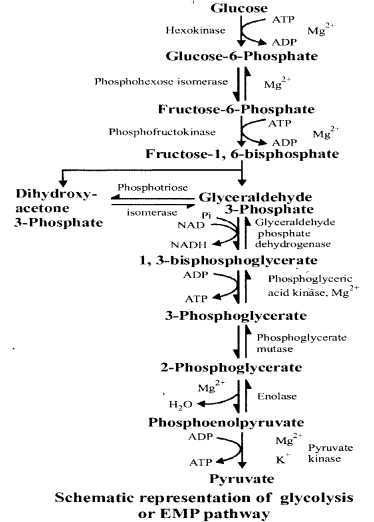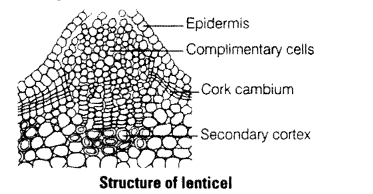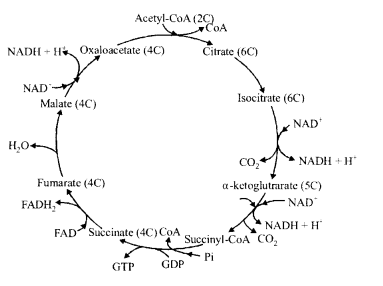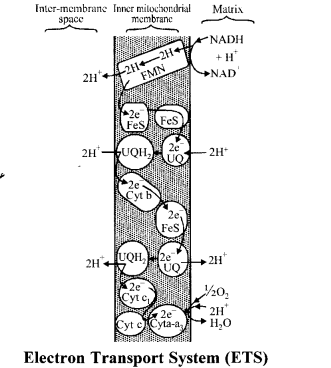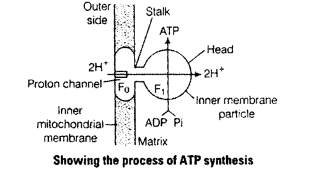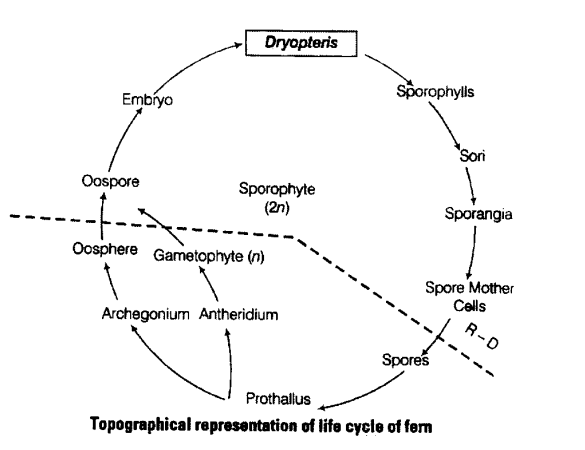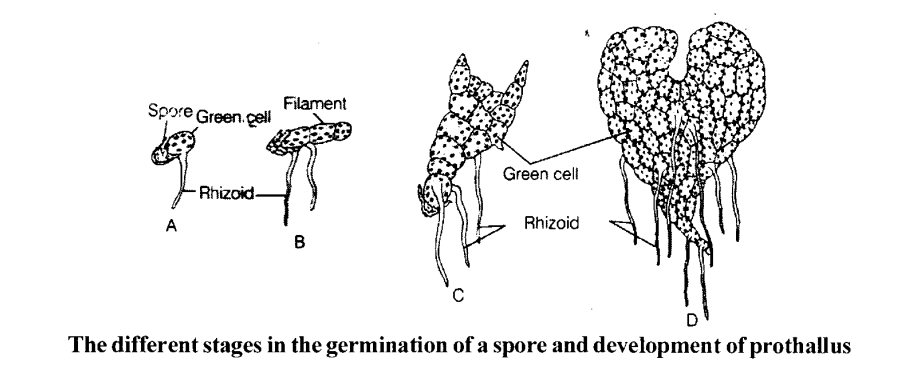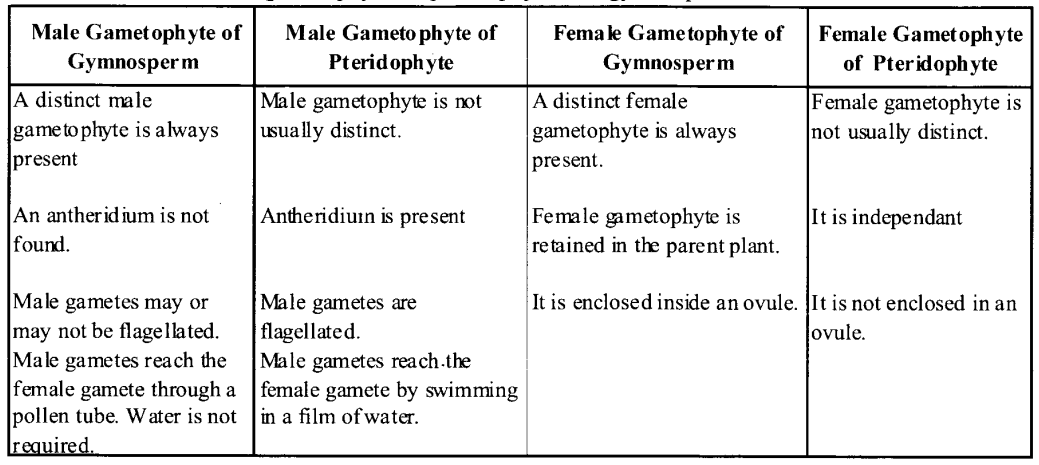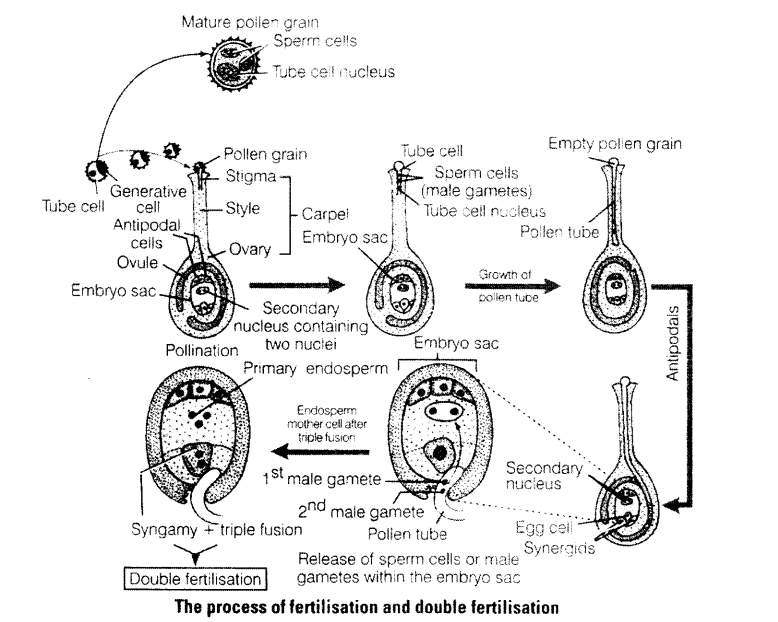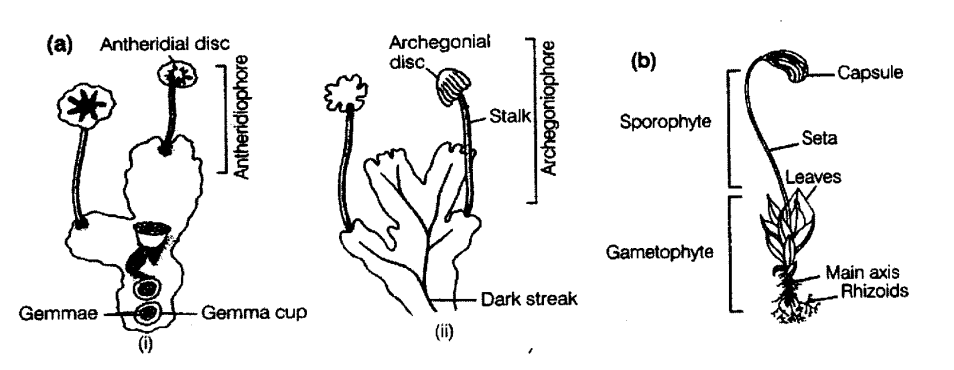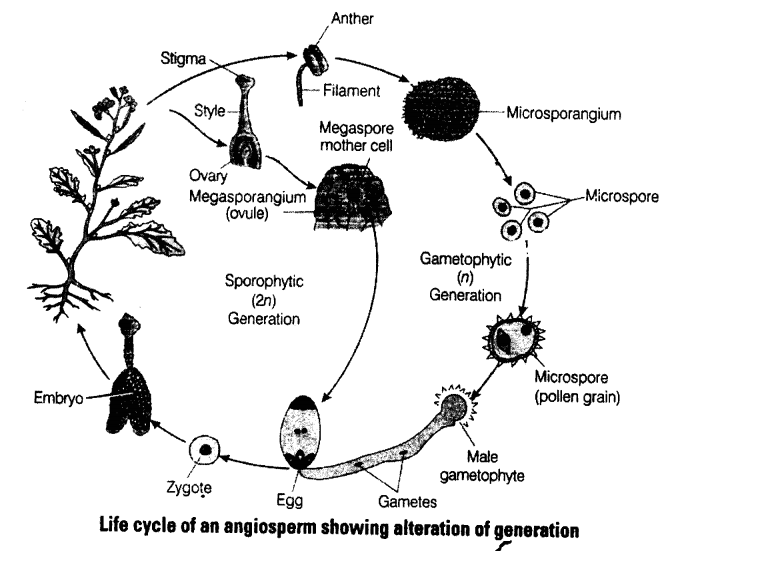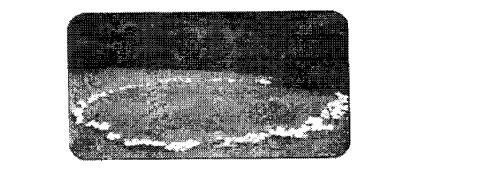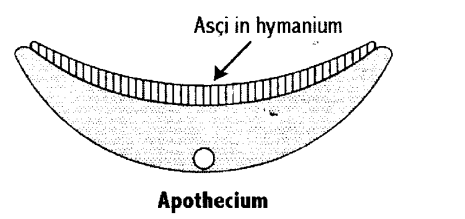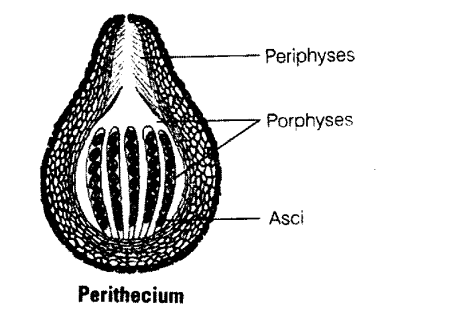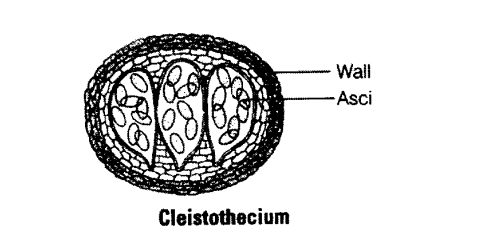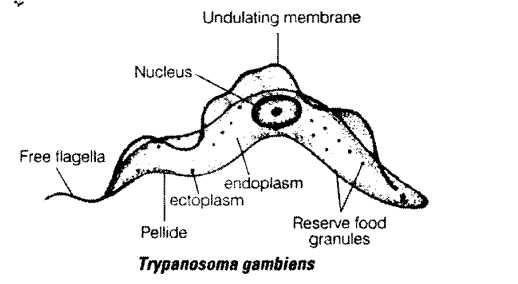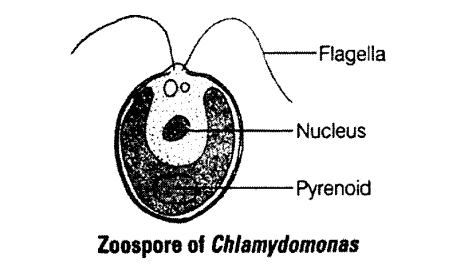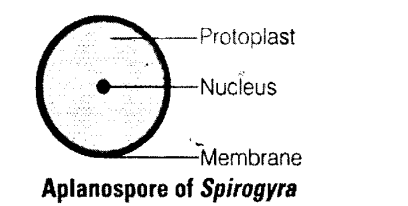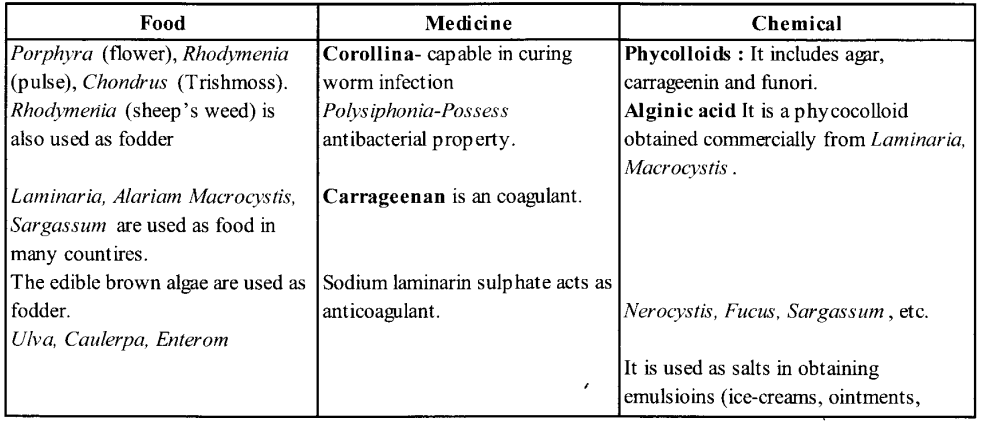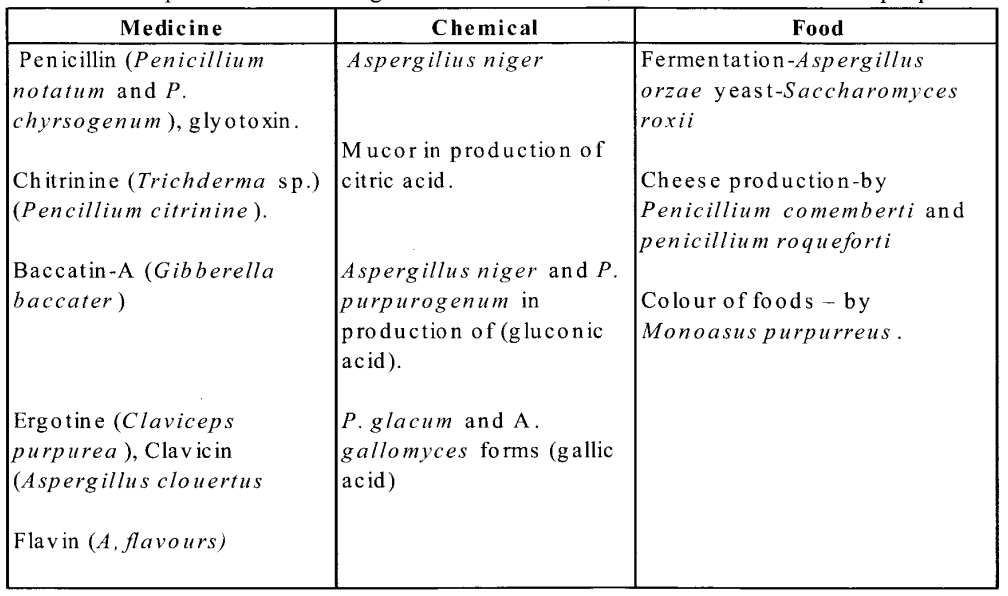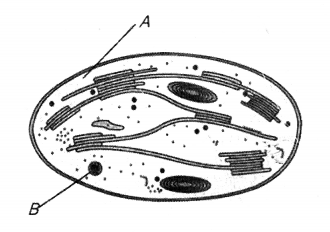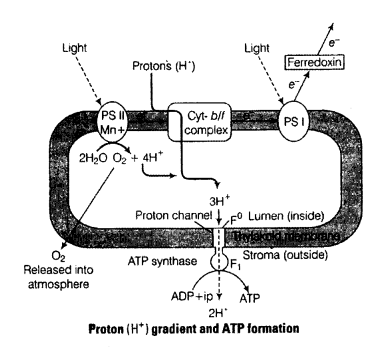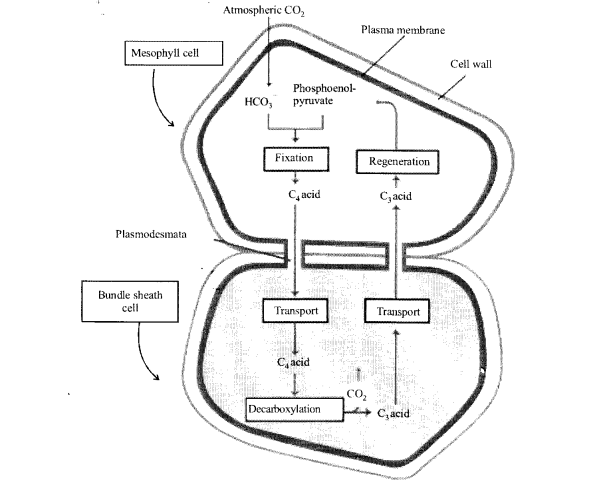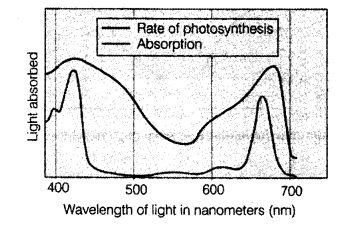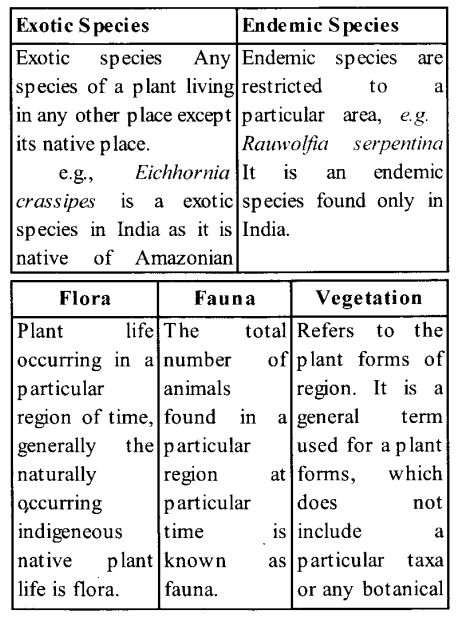NCERT Exemplar Solutions for Class 11 Biology Chapter 18 Body Fluids and Circulation
These Solutions are part of NCERT Exemplar Solutions for Class 11 Biology. Here we have given NCERT Exemplar Solutions for Class 11 Biology Chapter 18 Body Fluids and Circulation.
VERY SHORT ANSWER QUESTIONS
Question 1.
Name the blood component which is viscous and straw coloured fluid.
Solution:
Blood is a special connective tissue consisting of a fluid matrix, plasma and cells.
Question 2.
Complete the missing word in the statement given below.
(a) Plasma without …….. factors is called serum.
(b)………and monocytes are phagocytic cells.
(c) Eosinophils are associated with …….. reactions. .
(d) ……. ions play a significant role in clotting.
(e) One can determine the heart beat rate by counting the number of ……….. in an ECG.
Solution:
(a) Clotting
(b) Neutrophils
(c) allergic
(d) Calcium
(e) QRS complex
Question 3.
Name the vascular connection that exists between the digestive tract and liver.
Solution:
Hepatic portal system is the vascular connection that exists between the digestive tract and liver.
Question 4.
Given below are the abnormal conditions related to blood circulation. Name the disorders.
(a) Acute chest pain due to failure of 02 supply to heart muscles.
(b) Increased systolic pressure.
Solution:
(a) Angina
(b) High Blood Pressure
Question 5.
Which coronary artery disease is caused due to narrowing of the lumen of arteries?
Solution:
Atherosclerosis is the coronary artery disease caused due to the narrowing of the lumen of arteries due to deposition of calcium, fat, cholesterol and fibrous tissue the arteries become narrow, affecting vessels that supply blood to the heart muscles.
Question 6.
Define the following terms and give their location.
(a) Purkinje fibre
(b) Bundle of His
Solution:
(a) Purkinje Fibres are the fibres that conduct impulse, and the contraction impulses from AV node into the walls of ventricles.
(b) Bundle of His are mass of specialised fibres that originates from the AV node.
Question 7.
State the functions of the following in blood
(a) fibrinogen
(b) globulin
(c) neutrophils
(d) lymphocytes
Solution:
(a) Fibrinogens are the components of blood plasma that are inactive. In the presence of enzyme thrombin, they form a clot or coagulum of a network of threads called fibrin, in which dead and damaged elements of blood are trapped.
(b) Globulins are primarily involved in immunity,
i. e., defence mechanisms of the body.
(c) Neutrophils are phagocytic cells, that destroy foreign organisms entering the body,
(d) Lymphocytes are specialised cells which are responsible for the immune responses in the body. There are two major types of lymphocytes, that are involved in this process are B and T-lymphocytes.
Question 8.
How will you interpret an electocardiagram (ECG) in which time taken in QRS complex is higher?
Solution:
Electrocardiograph (ECG) is a graphical representation of the electrical activity of the heart during a cardiac cycle. A patient is connected to the machine having three electrical leads (one to each wrist and one to the left ankle) that continuously monitor the activity of heart.
Multiple leads are attached to the chest regions, for a detailed evaluation of the heart functions The QRS complex represent the depolarisation of the ventricles, that initiates the ventricular contraction. The contraction starts shortly after Q and marks the beginning of the systole. The time taken in QRS complex is 0.12 second in normal ECG
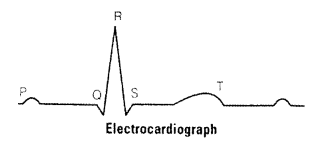
The larger Q and R wave indicate a myocardial infarction (heart attack). The S-T segment is elevated in acute myocardial infarction and depressed when the heart muscle receives insufficient oxygen.
SHORT ANSWER QUESTIONS
Question 1.
The walls of ventricles are much thicker than atria. Explain.
Solution:
The walls of ventricles are thicker than the atria. It is due to the greater pressure exerted by pumping out of blood through ventricles of heart in compare to atria. Ventricles need to pump blood further and with much force.
Question 2.
Differentiate between
(a) blood and lymph
(b) basophilsand eosinophils
(c) tricuspid and bicuspid valve
Solution:
(a) Difference between blood and lymph are as follows
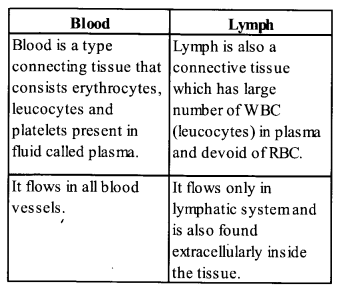
(b) Difference between basophils and eosinophils are as follows
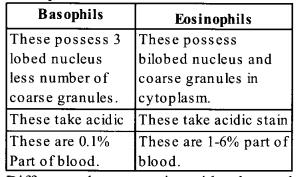
(c)Difference between tricuspid valve and bicuspid valve are as follows
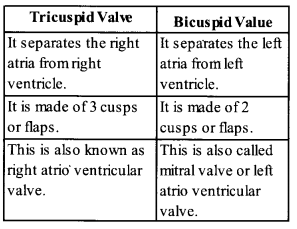
Question 3.
Briefly describe the followings
(a) anaemia
(b) angina pectoris
(c) atherosclerosis
(d) hypertension
(e) heart failure
(f) erythroblastosis foetalis
Solution:
(a) Anaemia This is the most common disorder
of the blood, which is caused due to decrease in the number of RBC than the normal amount and also due to less quantity of haemoglobin than the normal value in blood. This is the most common disorder of the blood.
(b) Angina Pectoris When there is blockage in coronary artery, thus insufficient supply of blood reaches to heart muscles. That results in chest pain, fear, anxiety, pale skin, profuse
v sweating and vomiting. The pain usually starts in the centre of the chest spreads down to the left arm which last for only few second.
(c) Atherosclerosis It refers the deposition of cholesterol or fatty substance in the inner lining of arteries called atherosclerotic plaque. Sometimes arteries get completely blocked, this may result in stroke of heart attack.
(d) Hypertension It is sometimes also known as arterial hypertension. The blood pressure in the arteries gets elevated. It could be primary or secondary hypertension which
are caused by various conditions which affect kidneys, arteries heart or endocrine system.
(e) Heart Failure It is the state of heart, causes in when heart does not pump blood effectively enough to meet the requirement of the body.
(f) Erythroblastosis foetalis It is a haemolytic disease causes in new boms, which is an allo-immune condition that develops in foetus, when igG molecules produced by mother pass through placenta and attack RBC. It causes reticulocytosis and anaemia. It develops due to Rh incompatibility between the couples.
In a man with RH+ blood and women with Rlr blood, the second pregnancy foetus may have this problem due to IgG accumulation in women during first child development and delivery.
Question 4.
Explain the functional significance of lymphatic system?
Solution:
Lymphatic system comprises blood vessels that carries a fluid called lymph. It contains white blood cells, which are responsible for fighting against any diseases. It removes and filter the interstitial fluid from tissues, later absorbs and transports fatty acids and fats as chyle from digestive system and also transport cells to immune system.
LONG ANSWER QUESTIONS
Question 1.
Explain Rh-Incompatibility in humans.
Solution:
In nearly 80% of human Rh antigen is observed on the surface of RBCs. Such individuals are called Rh positive (Rh+) and those individuals where this antigen is not present are called Rh negative (Rh–).
Both Rh+ and Rh– individuals are phenotypically normal. The problem in them arises during blood transfusion and pregnancy.
(i) Incompatibility During Blood Transfusion The first blood transfusion of Rh+ blood to the person with Rh” blood causes no harm because the Rh– person develops anti Rh factors or antibodies in his/ her blood, but second transfusion of Rh+ blood to the Rh– person because anti Rh factors are already formed it destroys the red blood corpuscles of the donor. .
(ii) Incompatibility During Pregnancy If father’s blood is Rh+, mother blood is Rh– and the foetus blood is Rh+. It will lead to a serious problem. Rh antigens of the foetus do not get exposed to the Rh’ve blood of the mother in the first pregnancy as the two bloods are well separated by the placenta.
But in the subsequent Rh+ foetus, the anti Rh factors (antibodies) present in causes mother destroys the foetal RBC due to mixing of blood. This causes the Haemolytic Disease of the New Born (HDN), called as erythroblastosis foetalis. In some cases new born may survive but will be anaemic and may also suffer with jaundice.
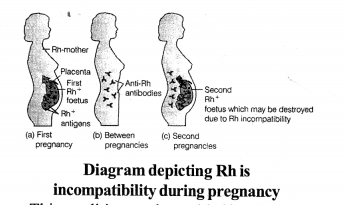
This condition can be avoided by administering anti-Rh antibodies to the mother immediately after the delivery of the first child.
Question 2.
Explain different types of blood groups and donor compatibility by making a table.
Solution:
There are more than 30 surface antigens in blood cells which give rise to different blood groups.
ABO Grouping on basis of the presence or absence of two surface antigens on the RBCs namely, A and B. The plasma of different individuals contain two natural antibodies. The distribution of antigen and antibody in divided four groups into. A, AB, B and O.
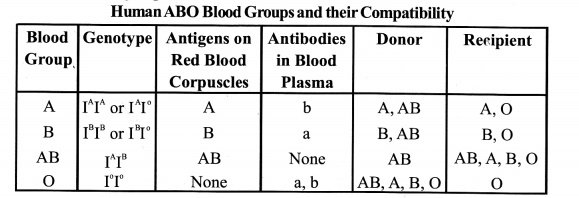
Form the given table it is evident that group ‘O’ blood can donate to persons with any other blood group and hence ‘O’ group individuals are called ‘Universal donors’. Person with ‘AB’ blood can accept blood from persons with AB, as well as the other groups of blood. Hence, such persons are called ‘Universal recipients’.
Question 3.
In the diagrammatic presentation of heart given below, mark and label. SAN, AVN, AV bundles, bundle of his and Purkinje fibres.
Solution:
The diagrammatic presentation of heart with labelled SAN, AVN, AV bundles bundle of His and purkinje fibres in heart is shown below.
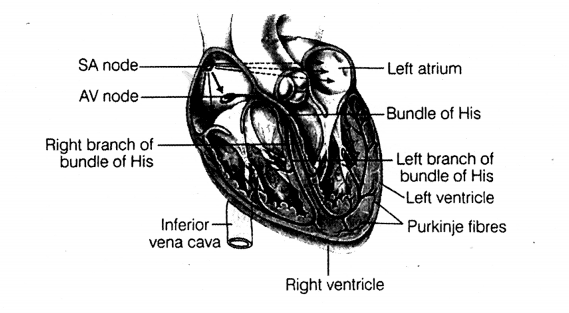
We hope the NCERT Exemplar Solutions for Class 11 Biology at Work Chapter 18 Body Fluids and Circulation, help you. If you have any query regarding NCERT Exemplar Solutions for Class 11 Biology at Work Chapter 18 Body Fluids and Circulation, drop a comment below and we will get back to you at the earliest.
